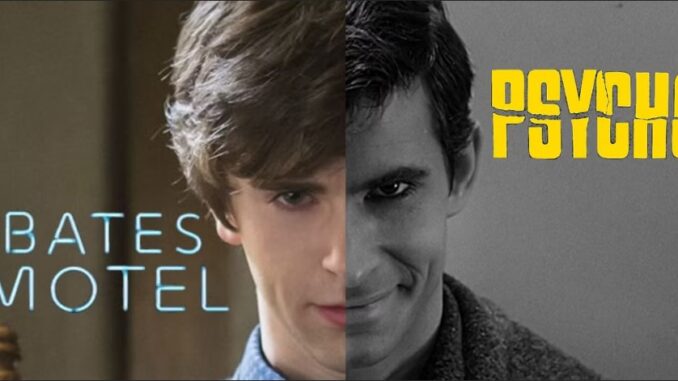
The answer, as it turned out, was everything that existed before the first frame of Hitchcock’s film. “Bates Motel,” which ran for five critically acclaimed seasons from 2013 to 2017, took the bold approach of reimagining Norman Bates’s backstory for the 21st century while maintaining psychological fidelity to the character who would eventually become cinema’s most famous mama’s boy killer. In doing so, creators Carlton Cuse and Kerry Ehrin achieved something remarkable: they honored Hitchcock’s legacy while creating a wholly original psychological drama that stands as an artistic achievement in its own right.
The series’ most significant departure from its source material was its contemporary setting. Rather than attempting a period piece set in the late 1940s and 1950s, “Bates Motel” placed Norman and Norma in the present day, allowing the show to explore how the peculiar dynamics of their relationship might develop in a world of cell phones, internet, and modern psychiatric understanding. This decision freed the series from slavish recreation of the Hitchcock era while maintaining the Gothic isolation that characterized the original film. The fictional town of White Pine Bay, Oregon—with its picturesque exterior concealing a dark underbelly of drug trafficking and corruption—provided a fitting modern parallel to the deceptive normality of the Bates Motel itself.
The mother-son relationship at the core of “Bates Motel” represented both its strongest connection to Hitchcock’s film and its most significant expansion. While “Psycho” offered only Norman’s distorted memories of his mother, the series explored their dynamic in all its complex, codependent glory. Norma and Norman’s relationship exists in a disturbing gray area—not quite incestuous but certainly boundary-violating, characterized by mutual dependence that isolates both characters from healthier connections. Through this relationship, the series explored contemporary psychological understanding of attachment disorders, trauma bonding, and the intergenerational transmission of dysfunctional patterns.

“We wanted to honor what people know about ‘Psycho’ while giving them something entirely new,” Cuse explained in a 2013 interview. “The film shows you what Norman becomes; we wanted to show you how and why he becomes that person.” This approach required careful navigation of audience expectations. Viewers familiar with “Psycho” knew Norman’s eventual fate, creating dramatic irony that the series skillfully exploited. Early episodes featured numerous visual and narrative nods to the original film—the iconic house looming over the motel, Norman’s interest in taxidermy, his voyeuristic tendencies—that functioned as breadcrumbs leading toward his eventual psychotic break.
Yet the series consistently subverted expectations as well. The addition of Norman’s half-brother Dylan (Max Thieriot) provided a contrasting model of masculinity and familial relationship. Sheriff Alex Romero (Nestor Carbonell) evolved from a suspicious authority figure—reminiscent of the investigating detective in “Psycho”—into a complex character whose relationship with Norma offered tantalizing possibilities of salvation for the Bates family. Emma Decody (Olivia Cooke), a character with no counterpart in the original film, represented the normal teenage experiences and relationships that might have been possible for Norman under different circumstances.
As the series progressed, its connection to Hitchcock’s film grew increasingly direct, culminating in a final season that explicitly bridged the gap between prequel and original. The show’s recreation of the Marion Crane storyline—with Rihanna taking on the role made famous by Janet Leigh—represented both its most explicit engagement with “Psycho” and its most audacious reimagining. By altering key elements of this familiar narrative, “Bates Motel” demonstrated how prequels can honor their source material while maintaining creative independence.
The show’s visual aesthetic similarly balanced homage and innovation. While certain iconic images—particularly the Gothic Victorian house and the neon motel sign—were faithfully recreated, the series established its own visual language. Cinematographer John S. Bartley created a look that nodded to Hitchcock’s stark black-and-white compositions while employing a desaturated color palette that emphasized the gloomy Pacific Northwest setting. Director Tucker Gates, who helmed key episodes throughout the series, incorporated subtle Hitchcockian camera movements and framing while adapting these techniques for contemporary television pacing and structure.
